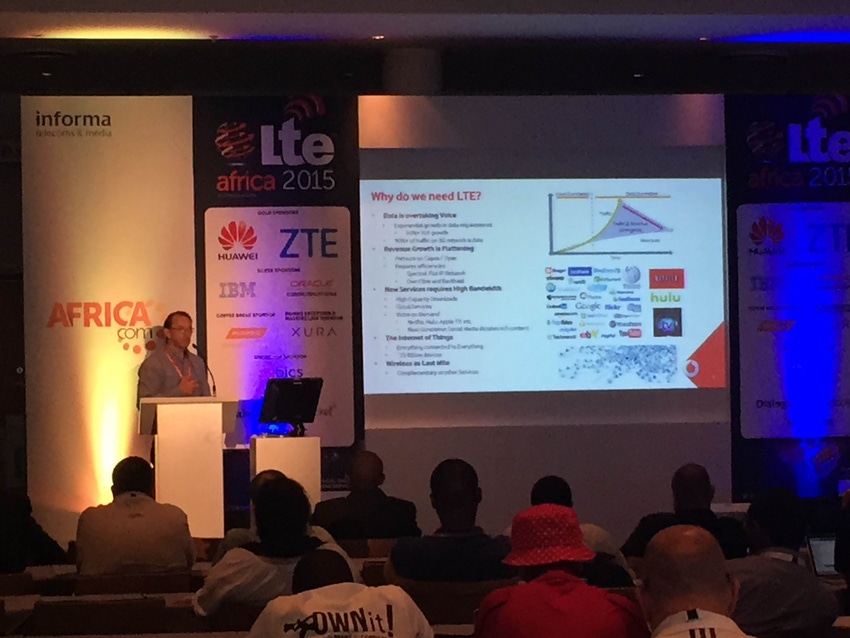Vodacom’s executive head of innovation, Jannie Van Zyl, today explained to AfricaCom attendees how the operator rolled out its LTE network, and how it’s primarily focussed on boosting customer satisfaction and experience.
November 19, 2015

Vodacom’s executive head of innovation, Jannie Van Zyl, today explained to AfricaCom attendees how the operator rolled out its LTE network, and how it’s primarily focussed on boosting customer satisfaction and experience.
“422 LTE networks have now been commercially launched in 143 countries, there are 25 doing VoLTE and we’re one of those,” he said. “It’s not a question of whether you will go LTE, but it’s about when you go LTE and how big you go.”
Van Zyl claimed Vodacom’s rollout was the first in South Africa, but competitor activity pulled the entire project forward by six weeks.
“We launched in October 2012, the first in South Africa. We built the whole network, the whole IP core and got devices ready to sell, all in six weeks. The morning we launched everything worked fine, customers could walk into a store and walk out with a fully functioning LTE service.”
He then went on to explain how circuit switch fall-backing was a crucial determinant in the success of LTE and how the service would be perceived by customers. “CSFB was a big factor, crucial in fact to making a success of the LTE launch,” he said. “We had to reduce the amount of time it took for the handset to fall back from 4G LTE connectivity on to the 3G network; this was before VoLTE came into the picture. VoLTE will be instantaneous, sub-second, so you no longer have that issue of ringing out five or six times before the call connects at the other end.”
Van Zyl concluded by saying the entire LTE service is dedicated to boosting customer experience, monetising that appropriately, and keeping customers as satisfied as possible with new, high speed mobile services, without unnecessary additional fees.
“Charging more for LTE was something we just didn’t consider, and the sheer uptake in LTE and the surge in data revenues substantially justified the business case and our decision not to do so,” he said. “We’re confident we’ve not got the best network, without sounding arrogant, but that’s all because we want to make it all about the customers, who can get as much data usage benefits as they’d like. We’re now seeing video streaming, particularly HD video streaming, and things like that are a big benefit to the customer experience.”
About the Author(s)
You May Also Like








.png?width=300&auto=webp&quality=80&disable=upscale)


_1.jpg?width=300&auto=webp&quality=80&disable=upscale)


.png?width=800&auto=webp&quality=80&disable=upscale)